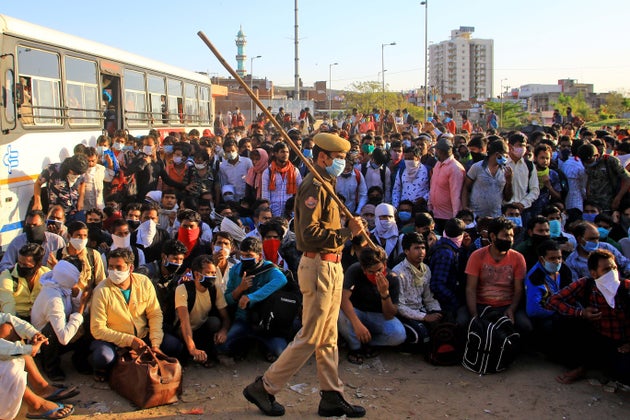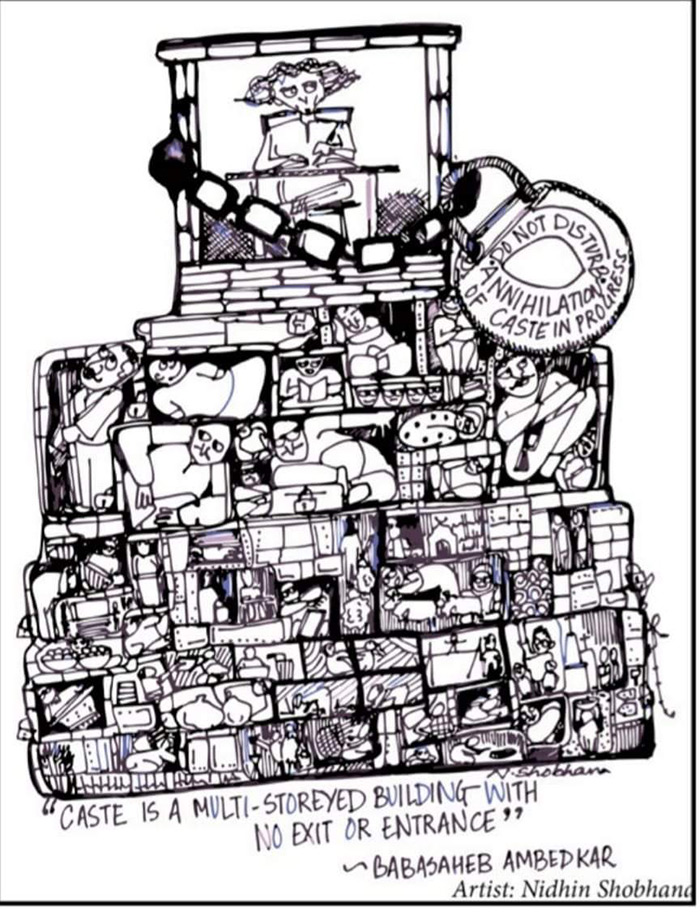Maybe poverty doesn’t have a caste, but everything I’ve seen tells me that wealth certainly does.

Our elders named our slum Dhammadeep Nagar — the city blessed by the light of Buddha’s Dhamma. The neighboring so-called upper-caste colony called it the Dalitwada – the untouchable ghetto.
Growing up in Dhammadeep Nagar’s narrow alleys and densely populated homes on Nagpur’s northern fringes, I used to wonder if all our parents had committed the same sin as we all suffered from the same vulnerabilities and humiliations.
Unlike America’s black people, we were not brought into this city as slaves, My mother says hunger brought us to Nagpur; landlessness and poverty forced my parents to leave their village in the neighbouring district of Bhandara, and untouchability barricaded us within Dhammadeep Nagar’s boundaries.
One could say migration is a universal phenomenon that exists in developed as well as developing nations, but the meaning and causes of migration differ: My father and his untouchable friends left their villages to serve the city and become its obedient servants. They migrated to Nagpur to pull cycle rickshaws, to construct buildings, to carry luggage loads, to guard bungalows — the list is endless. Savarna caste men from his village moved to Nagpur for education, business, and white-collar employment.
When Prime Minister Narendra Modi announced India’s sudden, and punitive lockdown it quickly became clear who had moved to where, and for what purpose. Even those opposed to the manner of the lockdown criticised it on the grounds of the effect on the economy, and the visible human suffering, but very few uttered what was glaringly obvious: Caste.
In India, there exists no modern idea of “labor” or “work” in the lived experiences of a majority of citizens. For the labour castes (shudra and ati shudra) at the lowest end of the caste system, work is described as a ritual duty to produce food, goods and services, for the consuming castes — the brahmins and savaranas at the higher rungs of the system. The economy of caste isn’t premised on reciprocity, cooperation, and interdependence, rather the caste system continues with its principles of restriction, coerciveness, violent disciplining, and punishment.
Those looking to understand how the central government and the administrations of several states could enforce a lockdown as brutal, unplanned, and unequal as India’s without any regard for the consequences, should look no further than Caste. As the lockdown made clear, India is one nation of two worlds: the ruling upper caste-class world and work caste-class world. And for India’s brahminical state, and the policymakers within its confines, work and labour is something that is done by other people from other castes who live in other worlds.

Caste and Poverty
Growing up, we heard our mother speaking in Hindi very rarely, and mostly with her friend whom we call Durga maushi. My mother says that she learnt Hindi only after Durga maushi became her friend. She remembers Durga as her best friend when she was working at a construction site.
Every year once the rainy season is over, Durga maushi and her husband come to Nagpur from Chhattisgarh in search of work. Her husband works in brick kilns; but Durga maushi didn’t like working in the kilns because the wages paid to women were very low. So she started working on the construction sites, which is where she met my mother.
For my mother, Durga maushi is her friend for difficult times and happy times. Every year, Durga maushi and her husband would rent a small house in Sheetla Mata Nagar, the slum adjoining Dhammadeep Nagar, where the Chhattisgarhi people live. They would work for six months, and return home to Chhattisgarh when work stopped for the rainy season.
This year, when the lockdown was announced, Durga maushi and her husband had to return home early. My mother tells me the financial situation of Durga aunty’s house is very bad.
“Aren’t they saving anything?” I asked Mother.
Mother replied, “Could I ever save anything?”
I had no answer to her question; my mother’s youth was about borrowing money in difficult times and then repaying it with interest.
Since the lockdown, and the ensuing recession, the situation is such that even the village baniya and landlords are refusing to lend money to Durga maushi and her family, even with interest. Money lenders are concerned that people like Durga maushi will not be able to pay back loans as there is no work available.
So none of the rich people of the village are willing to lend money.
Rich and middle class savarna people often take comfort in saying, “Garibi ki koi jat nahi hoti”; poverty has no caste. After examining the truth around me, I feel that that poverty may not have a caste, but the caste of the rich is quite tangible to us.
According to Wealth Inequality, Class and Caste in India, 1961-2012 report by Nitin Kumar Bharti (2018) India’s Brahmin community alone monopolizes 48 percent of national income which is above the national average income and other upper caste communities secure 45 percent. Dalit, Adivasi, and OBC together earn far less than the national average household income.
Now, as we move from “Lockdown” to “Unlock”, the centuries old stratifications of the caste system are quickly becoming visible in the discourse around Covid-19, as is the contempt versus reverence, and purity versus pollution binary that is core to Indian society.
Now, the anxiety over Covid-19 transmission experienced by upper castes will be refracted through the centuries old lens of caste prejudice, and will become the basis for fresh violence and atrocities against Dalit and Bahujan bodies. The Nai, or barbers, the Dhobi or washerfolk, the sweeper and many such service caste occupations have already disproportionately borne the brunt of the lockdown, compared to their savarna caste peers. We can expect them to be further marginalised in a post lockdown society.
Prime Minister Modi has laid out his plan to pull India out of recession; he calls it “atma-nirbhar Bharat” or “Self-reliant India”. But millions of us have been self-reliant for a long, long time.
We know that we have been abandoned by the state, we are by ourselves, but we are also together. In Dhammadeep Nagar, in the village in Chhattisgarh where Durga maushi is hunkered down with her husband, on the seemingly endless streets, in the Shramik special trains carrying workers crammed cheek to jowl — we are together, and we will find our way.
courtesy huffpost

June 18, 2020 at 9:42 pm
The deep impact of caste discrimination during lockdown may be clearly visible in every sector